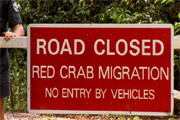The Galapagos Islands are named for the 250,000 giant tortoises that lived on the islands - "galapago" in Spanish means saddle and refers to the tortoise shell. Today, only 15,000 of these giants are left.
There were 15 subspecies, although only 11 still exist today. They have become extinct because of overhunting, and the introduction of goats, pigs, dogs and other animals which trample or eat the tortoise eggs and compete for food. Most like the upland areas of the large islands because of the humidity, grassy fields and ponds. The largest populations are in Alcedo, Isabela and Santa Cruz.
The 3 Types
The Galapagos tortoise comes in three versions, which are distinguished by the shape of their shells, sizes, colors and behavior:
1. Saddle-Backed: Mostly found on the lower drier islands. They have raised shells, long necks and limbs.
2. Dome-Shaped: Found on the upper parts of the islands, where plant growth is dense and thick. They have round shaped shells, very short necks and limbs.
3. Intermediate: This third race is a mix between the two described above.
Over the Hill
Some of the most impressive facts about the Galapagos Giant Tortoise is that they keep growing for 30 to 40 years, reaching almost five feet. They also weigh about 500 pounds. These are the largest tortoises in the world. In general, they are the longest living of all vertebrates (animals with backbones). Because of their life span, it's possible that some of the old-timers in Galapagos today hatched about the time of Darwin's visit (1835).
The oldest giant tortoise on record lived 152 years. Reliable records of tortoise life spans aren't available yet because people haven't been observing them long enough.
The Facts
Throughout the 19th century, giant tortoises were valued by sailors as food supply. They discovered that these docile animals could live for months without food or water, flipped on their backs, and stacked in the cargo hold of a ship. This gave the sailors a ready source of fresh meat when there was no land in sight. Historical records show that tens of thousands of tortoises were collected from the Galapagos, Seychelles, Mascarenes, and other islands.
Only one male, Lonesome George, of the four extinct races exists. Previously he lived on Pinta Island, but is presently kept at the Charles Darwin Research Station.
Related Stories:
- Plains and Southwestern First Nations
- Biomes of the World: The Aquatic Biome
- A Girl's Guide to Hunting and Fishing
- Get More Fun Facts from The Lab
































